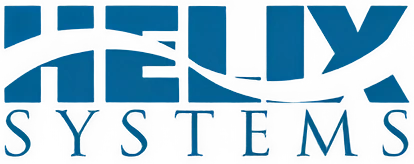Introduction
Deploying Autodesk software efficiently across multiple systems can often be a daunting task for IT administrators. This guide provides a step-by-step approach to automate the deployment of Autodesk products like AutoCAD, Revit, and more through unattended installations. Whether you’re looking to optimize software setups across a corporate network or ensure consistent access to essential applications, this article covers all you need to know about unattended installations for Autodesk software.
Eligible Autodesk Products for Unattended Installation
Unattended installations can be applied to a wide array of Autodesk software, making it a versatile solution for numerous applications. Popular Autodesk products suitable for this method include:
- AutoCAD
- Revit
- 3ds Max
- Maya
- Civil 3D
Each of these applications can utilize a standardized process for unattended installations, which simplifies the setup across various tools.
Preparation for Unattended Installation
Before you begin the installation process, it’s crucial to prepare by ensuring you have:
- Network Storage Location: A central repository for all installation files, accessible to all target machines.
- Licensing Information: Essential details such as product keys and network licensing servers.
- Installation Media: The respective installation packages for each Autodesk product.
Choosing Your Deployment Method
When deploying software across a network, you have a couple of approaches:
- Group Policy: Ideal for environments using Windows Active Directory.
- Remote Monitoring and Management (RMM) Tools: Best suited for Managed Service Providers or organizations using platforms like ConnectWise or N-able.
This article focuses on using Group Policy for efficient software deployment.
Setting Up Installation Files
To ensure a smooth installation process, follow these steps:
- Create a Network Share: Set up a shared folder on your network drive where all installation packages will be stored.
- Configure Access Permissions: Ensure that all devices targeted for installation have read access to this folder.
Licensing Setup
Organize the following licensing details for each Autodesk product:
- Product Key
- Serial Number (if applicable)
- License Type: Options include Standalone, Network, or FlexLM server.
Writing the Installation Script
The installation script is crucial for automating the setup process. It allows you to specify parameters that tailor the software installation according to your needs. A simple script ready to use with Group Policy is provided at the end of this article.
Key Parameters in the Installation Script:
- InstallerPath: The path to the software setup executable.
- LogFilePath: Location for storing the installation logs.
- ProductKey: Specific to the Autodesk software.
- SerialNumber: Unique identifier for the software.
- LicenseType: Determines the licensing method, whether Standalone or Network.
- NetworkLicenseServer: Specifies the server address for network licenses.
Implementing Group Policy for Software Deployment
- Save the Script: Place your customized script in the previously set up network share.
- Set Up Group Policy: Link the script to a Group Policy Object that activates at system startup (In
Computer Configuration, navigate toPolicies > Windows Settings > Scripts > Startup).
Testing and Monitoring the Installation
- Update Group Policy: Execute
gpupdate /forceto apply the new policy settings. - Verify Installation: Restart a test machine to ensure the software installs as expected.
- Check Installation Logs: Monitor the logs for any errors or successful completion indicators.
Verifying Installation Success
- Autodesk Desktop App: Confirm the presence of the software.
- Control Panel: Check for newly installed applications.
- Command Line Verification: Use WMIC commands to confirm software details (
wmic product get name, version).
Conclusion
Unattended installations are a powerful strategy for deploying Autodesk products efficiently across a network. By following this guide, IT administrators can save time, reduce errors, and ensure consistency in software setups.
Attached Script for Group Policy
<#
.SYNOPSIS
This script installs Autodesk software using the provided installer and configurations via group policy.
.DESCRIPTION
Install-Autodesk-GroupPolicy.ps1 is a PowerShell script that automates the installation of Autodesk software.
It provides configurable parameters to specify the installer path, log file path, product key, serial number,
license type, and network license server, facilitating deployment in a corporate environment.
.PARAMETER InstallerPath
The network path to the Autodesk installer executable (default: "\\network-share\Autodesk\AutoCAD\Setup.exe").
.PARAMETER LogFilePath
The file path where installation logs should be stored (default: "C:\Temp\AutoCAD_Installation_Log.txt").
.PARAMETER ProductKey
The Autodesk product key for the software (default: "001M1").
.PARAMETER SerialNumber
The serial number for the Autodesk software (default: "123-12345678").
.PARAMETER LicenseType
The type of license to use (either "Standalone" or "Network").
.PARAMETER NetworkLicenseServer
The name or IP address of the network license server (only required for network licensing).
.EXAMPLE
.\Install-Autodesk-GroupPolicy.ps1 -InstallerPath "\\network-share\Autodesk\AutoCAD\Setup.exe" `
-LogFilePath "C:\Temp\AutoCAD_Installation_Log.txt" `
-ProductKey "001M1" `
-SerialNumber "123-12345678" `
-LicenseType "Standalone"
This example installs Autodesk software as a standalone license using the provided product key and serial number.
.EXAMPLE
.\Install-Autodesk-GroupPolicy.ps1 -InstallerPath "\\network-share\Autodesk\AutoCAD\Setup.exe" `
-LogFilePath "C:\Temp\AutoCAD_Installation_Log.txt" `
-ProductKey "001M1" `
-SerialNumber "123-12345678" `
-LicenseType "Network" `
-NetworkLicenseServer "licenseserver.company.com"
This example installs Autodesk software using a network license from the specified license server.
.NOTES
Author: Helix Systems Inc
Version: 1.0
Requires: PowerShell 3.0 or later
#>
param (
[string]$InstallerPath = "\\network-share\Autodesk\AutoCAD\Setup.exe",
[string]$LogFilePath = "C:\Temp\AutoCAD_Installation_Log.txt",
[string]$ProductKey = "001M1",
[string]$SerialNumber = "123-12345678",
[string]$LicenseType = "Standalone",
[string]$NetworkLicenseServer = ""
)
function Install-Software {
param (
[string]$InstallerPath,
[string]$LogFilePath,
[string]$ProductKey,
[string]$SerialNumber,
[string]$LicenseType,
[string]$NetworkLicenseServer
)
Write-Output "Starting Autodesk Software Installation..." | Out-File $LogFilePath -Append
$arguments = "/Q /I ""$InstallerPath"" /Log ""$LogFilePath"""
if ($ProductKey -ne "" -and $SerialNumber -ne "") {
$arguments += " /PK $ProductKey /SN $SerialNumber"
}
if ($LicenseType -eq 'Network' -and $NetworkLicenseServer -ne "") {
$arguments += " /LT Network /NS $NetworkLicenseServer"
} elseif ($LicenseType -eq 'Standalone') {
$arguments += " /LT Standalone"
} Start-Process -FilePath "Setup.exe" -ArgumentList $arguments -Wait
Write-Output "Installation Completed" | Out-File $LogFilePath -Append }
# Call the function
Install-Software -InstallerPath $InstallerPath -LogFilePath $LogFilePath -ProductKey $ProductKey -SerialNumber $SerialNumber -LicenseType $LicenseType -NetworkLicenseServer $NetworkLicenseServer



